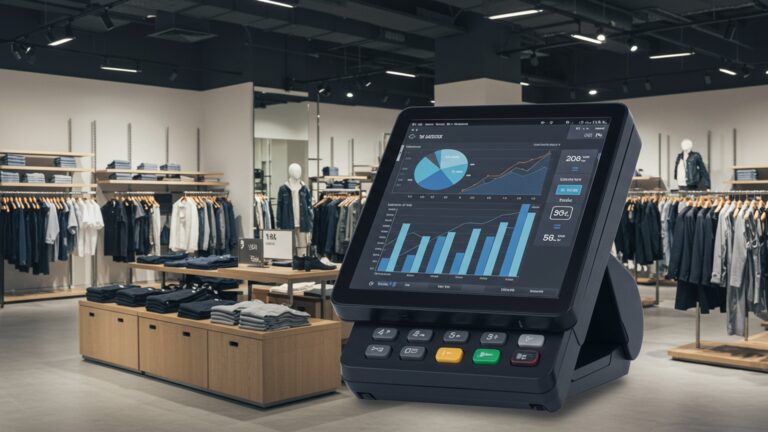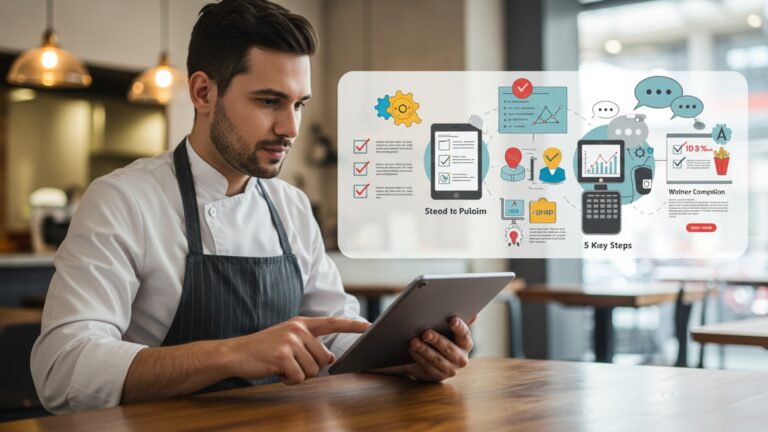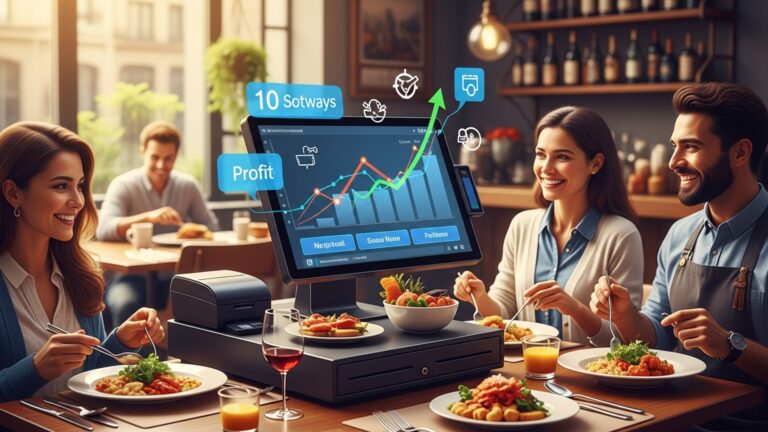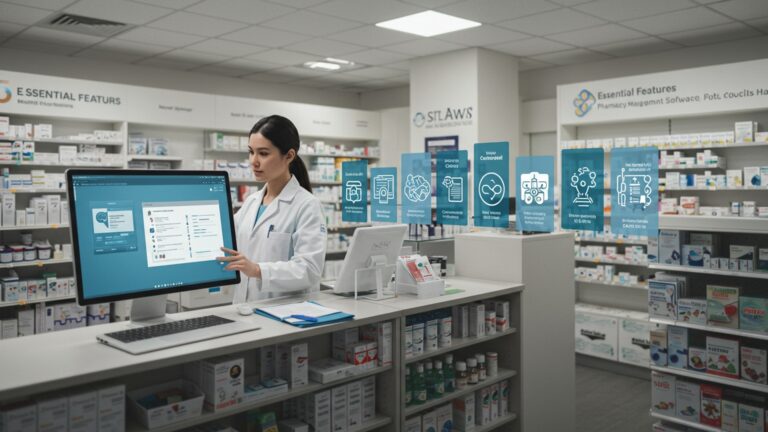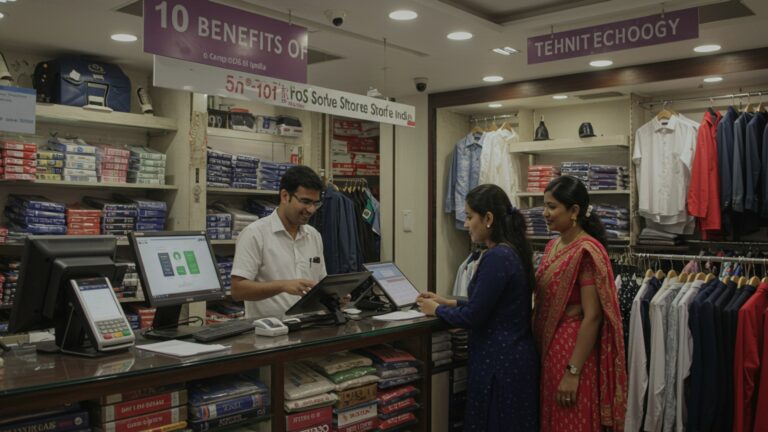Learn How 7 Top Pharmacy POS System Benefits Boost Your Business
In today’s rapidly evolving healthcare landscape, pharmacies face immense pressure to optimize operations while enhancing patient care and maintaining stringent compliance. A modern pharmacy POS system transcends simple transaction processing, becoming a pivotal digital hub that drives efficiency and profitability. Imagine real-time inventory adjustments preventing critical stockouts, automated insurance claim submissions reducing administrative burden. integrated patient profiles empowering personalized medication adherence programs. This technological evolution enables pharmacies to move beyond traditional dispensing, leveraging data analytics to identify sales trends and proactively manage supply chains for high-demand medications like biologics. Embracing a robust pharmacy POS system is no longer optional; it’s a strategic imperative for navigating complex regulations, improving patient engagement. securing a competitive edge in a digital-first world.
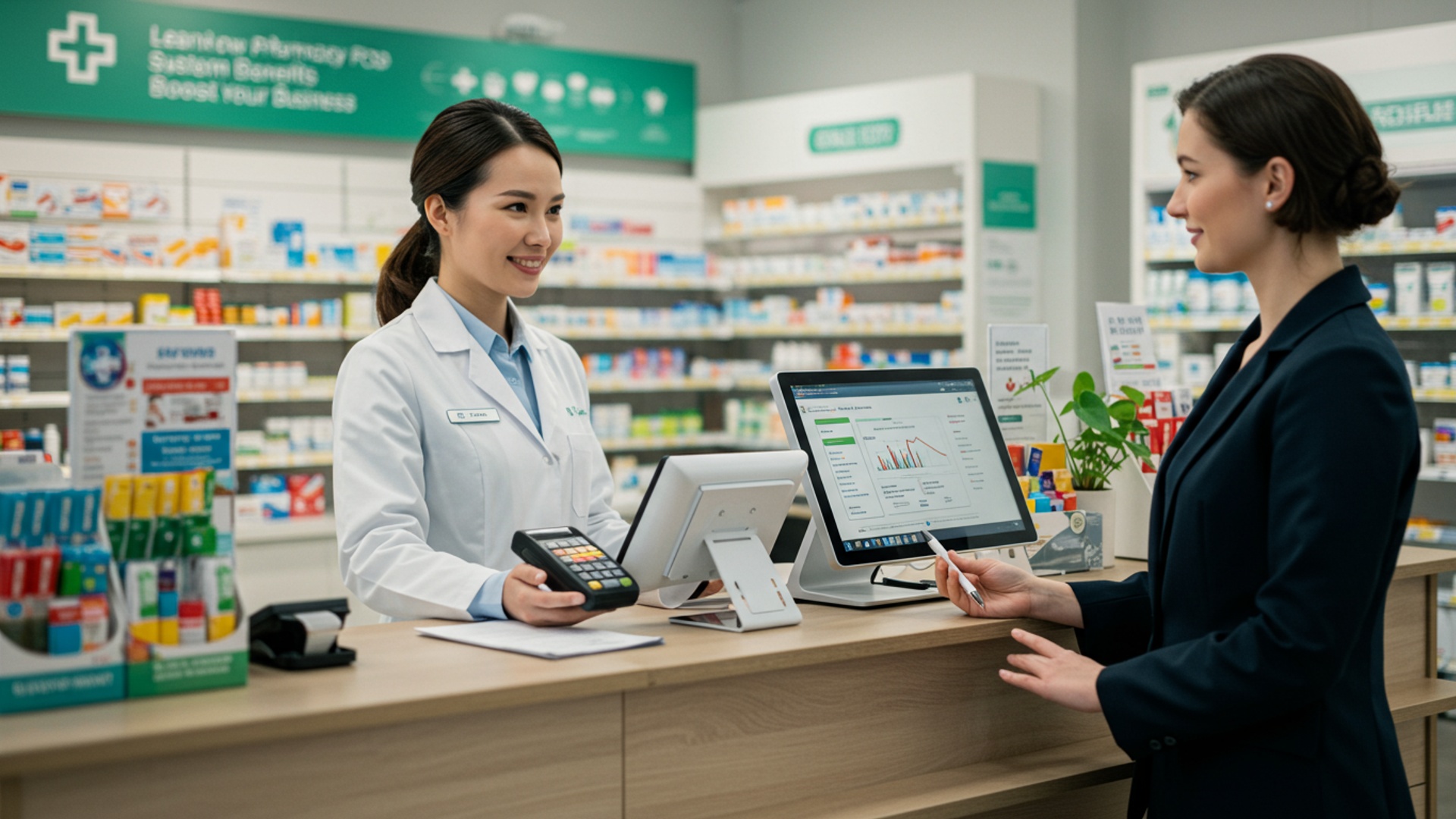
Enhanced Efficiency and Workflow Automation
In the fast-paced world of pharmacy, efficiency isn’t just a convenience; it’s a necessity for patient safety and business viability. A robust pharmacy POS system acts as the central nervous system for your operations, automating numerous manual tasks that traditionally consume valuable time and resources. By streamlining workflows, these systems allow pharmacists and technicians to dedicate more attention to patient care rather than administrative burdens.
Consider the daily routine of a busy community pharmacy. Before implementing an advanced system, prescription intake might involve manual transcription, cross-referencing patient records. physically searching for medications. A modern pharmacy POS system, But, integrates seamlessly with e-prescribing platforms and patient management software. When a prescription arrives electronically, the system can automatically populate patient data, verify insurance, check for drug interactions. even locate the exact bin location of the medication. This significantly reduces the potential for human error and accelerates the dispensing process.
- Automated Prescription Processing
- Streamlined Checkout Procedures
- Task Prioritization and Management
From e-prescribing integration to real-time insurance verification, the system minimizes manual data entry, reducing errors and speeding up dispensing. This means less time spent on paperwork and more time counseling patients.
The system rapidly processes sales, applies discounts, manages loyalty programs. handles various payment methods, including FSA/HSA cards. This dramatically cuts down on patient wait times, enhancing the overall customer experience.
Advanced systems can queue prescriptions based on urgency, ensuring critical medications are prepared first. This intelligent task management optimizes staff allocation and improves turnaround times, crucial for a high-volume pharmacy.
For instance, a pharmacy that processes hundreds of prescriptions daily can see a reduction in average transaction time by as much as 30% after implementing a comprehensive pharmacy POS system, as reported by industry surveys. This gain in efficiency translates directly into increased capacity without necessarily increasing staff, allowing for business growth.
Improved Inventory Management
Effective inventory management is paramount for any pharmacy, impacting everything from profitability to patient safety. A sophisticated pharmacy POS system provides real-time visibility and control over your entire stock, transforming what used to be a labor-intensive and error-prone process into a precise, automated function.
Manual inventory counts are not only time-consuming but also prone to inaccuracies, leading to stockouts of essential medications or overstocking of slow-moving items. Both scenarios result in lost revenue and potential patient dissatisfaction. A dedicated pharmacy POS system tracks every item from the moment it enters your pharmacy until it’s dispensed. This includes details like lot numbers, expiry dates. supplier insights, which are critical for recalls and regulatory compliance.
- Real-time Stock Tracking
- Automated Reordering
- Waste Reduction
- Controlled Substance Management
Every sale, return. delivery is automatically recorded, providing an accurate, up-to-the-minute view of inventory levels. This eliminates the need for frequent manual counts and reduces discrepancies.
Based on historical sales data, current stock levels. predefined thresholds, the pharmacy POS system can automatically generate purchase orders, preventing stockouts and ensuring you always have popular medications on hand. This predictive capability minimizes emergency orders and associated rush fees.
By tracking expiry dates, the system can alert pharmacists to medications nearing their expiration, allowing them to adjust pricing or return items to suppliers before they become unsellable. This significantly reduces spoilage and financial loss.
For Schedule II-V drugs, the system provides meticulous tracking, from receipt to dispensing, ensuring strict compliance with DEA regulations and minimizing the risk of diversion. This level of detail is virtually impossible to maintain manually with accuracy.
According to a study by the National Association of Chain Drug Stores (NACDS), pharmacies leveraging advanced POS inventory features often report a 10-15% reduction in carrying costs due to optimized stock levels and reduced waste. This directly impacts the bottom line, freeing up capital that would otherwise be tied up in excess inventory.
Advanced Patient Management and Engagement
Beyond dispensing medications, modern pharmacies are evolving into comprehensive healthcare hubs. A state-of-the-art pharmacy POS system is crucial for fostering deeper patient relationships, improving adherence. delivering personalized care, moving beyond transactional interactions to genuine patient engagement.
Imagine a patient walking in with a question about their medication, or needing a refill. Without an integrated system, accessing their complete history, understanding their adherence patterns, or even knowing their preferred communication method can be fragmented. A sophisticated pharmacy POS system centralizes all this insights.
- Comprehensive Patient Profiles
- Medication Adherence Programs
- Personalized Communication
- Loyalty and Rewards Programs
Each patient’s profile stores their complete prescription history, allergies, insurance details, communication preferences. even notes from pharmacist consultations. This ensures pharmacists have a holistic view, enabling more informed and safer care decisions.
The system can track refill patterns and identify patients who might be non-adherent. It can then trigger automated reminders (via SMS or email) for refills or follow-up consultations, significantly improving patient outcomes and reducing hospital readmissions.
With patient preferences stored, the system can facilitate targeted outreach for flu shot campaigns, medication therapy management (MTM) services, or educational content relevant to their health conditions, thereby strengthening the pharmacy-patient bond.
Integrate customer loyalty programs directly into the POS to reward repeat business and encourage engagement. This not only retains existing customers but also attracts new ones, fostering a sense of community and value.
Dr. Emily Carter, a pharmacist with two decades of experience, often remarks, “The ability of our pharmacy POS system to quickly pull up a patient’s full medication history and flag potential adherence issues has been a game-changer. It allows us to intervene proactively, transforming our role from just dispensing to actively managing patient health.” This proactive approach is a hallmark of patient-centric care facilitated by advanced POS technology.
Robust Financial Tracking and Reporting
Understanding the financial pulse of your pharmacy is critical for sustainable growth and strategic decision-making. A comprehensive pharmacy POS system is not just a sales tool; it’s a powerful financial management engine that provides detailed insights into every aspect of your business’s monetary flow, simplifying complex accounting tasks and enhancing financial transparency.
Traditional methods of tracking sales, expenses. profits often involve disparate systems or manual spreadsheets, leading to inconsistencies and making it difficult to get a real-time, accurate financial picture. A specialized pharmacy POS system unifies these processes, offering granular control and detailed reporting capabilities.
- Detailed Sales Data and Analytics
- Profit Margin Analysis
- Simplified Tax Preparation and Auditing
- Accounts Receivable and Payable Management
The system meticulously records every transaction, providing comprehensive data on sales volume, product performance, peak sales hours. average transaction values. This allows owners to identify best-selling products, optimize pricing strategies. grasp customer purchasing habits.
By integrating sales data with inventory costs, the pharmacy POS system can calculate gross profit margins for individual products, categories, or even specific time periods. This insight is invaluable for identifying profitable ventures and areas needing improvement.
All financial transactions are meticulously logged, creating an unalterable audit trail. This streamlines quarterly and annual tax preparations, reduces the burden of financial audits. ensures compliance with financial regulations.
For pharmacies that manage patient accounts or interact with various suppliers, the system can track outstanding payments, manage vendor invoices. reconcile accounts, ensuring financial health and preventing discrepancies.
Consider a scenario where a pharmacy owner needs to evaluate the profitability of a new over-the-counter wellness section. A sophisticated pharmacy POS system can generate reports comparing sales, costs. profit margins of these new products against traditional offerings, providing the data needed to make informed decisions about expansion or contraction. This data-driven approach, often cited by financial consultants specializing in retail pharmacy, is essential for maximizing profitability and identifying growth opportunities.
Seamless Regulatory Compliance
The pharmacy industry operates under a stringent regulatory framework designed to ensure patient safety and prevent misuse of medications. Navigating this complex landscape manually can be a daunting, error-prone task. A specialized pharmacy POS system is an indispensable tool for achieving and maintaining seamless regulatory compliance, safeguarding your business from hefty fines and legal repercussions.
Regulations such as HIPAA (Health Insurance Portability and Accountability Act), state pharmacy board requirements. DEA (Drug Enforcement Administration) rules for controlled substances are non-negotiable. Non-compliance can lead to severe penalties, loss of license. damage to reputation. An integrated POS system is built with these regulations in mind.
- HIPAA Compliance
- Controlled Substance Tracking
- Prescription Drug Monitoring Program (PDMP) Integration
- Audit Trails and Reporting
The system employs robust security measures, including encryption and access controls, to protect sensitive Protected Health data (PHI). It ensures that patient data is accessed only by authorized personnel and that audit trails track every interaction, meeting stringent HIPAA requirements for data privacy and security.
For Schedule II-V medications, the pharmacy POS system provides an unbreachable record of acquisition, dispensing. disposal. It tracks lot numbers, expiry dates. prescriber insights, generating reports that can be easily submitted to state Prescription Drug Monitoring Programs (PDMPs) and satisfying DEA audit requirements. This granular tracking is critical in combating the opioid crisis.
Many advanced systems integrate directly with state PDMPs, allowing pharmacists to quickly check a patient’s prescription history for controlled substances before dispensing, helping to identify potential drug-seeking behavior and prevent polypharmacy.
Every transaction, every change to a patient record. every inventory adjustment is logged. This creates an immutable audit trail that can be easily retrieved for inspections by regulatory bodies, providing irrefutable proof of compliance.
For example, during a state pharmacy board audit, a manual system would require hours, if not days, of sifting through paper records. With a compliant pharmacy POS system, auditors can quickly access all necessary documentation, from prescription logs to controlled substance inventories, demonstrating the pharmacy’s adherence to all regulations with minimal disruption to operations. This level of preparedness is invaluable for any pharmacy owner.
Enhanced Security and Fraud Prevention
In an era where data breaches and fraudulent activities are constant threats, robust security is non-negotiable for pharmacies. A state-of-the-art pharmacy POS system is engineered with multiple layers of security protocols to protect sensitive patient data, financial data. inventory, significantly mitigating risks of fraud and cyber threats.
Pharmacies handle highly confidential patient health details (PHI) and valuable inventory, making them prime targets for malicious activities. A basic cash register or outdated system offers minimal protection against sophisticated threats. A modern pharmacy POS system, But, is designed to be a fortress, safeguarding your assets and reputation.
- Data Encryption
- Role-Based Access Control
- Transaction Monitoring and Anomaly Detection
- Secure Payment Processing
- Inventory Diversion Protection
All sensitive data, including patient demographics, prescription histories. payment insights, is encrypted both in transit and at rest. This makes it incredibly difficult for unauthorized parties to access and decipher data, even if a breach were to occur.
The system allows administrators to define specific user roles and assign permissions accordingly. For example, a pharmacy technician might have access to dispensing functions but not sensitive financial reports, while a pharmacist has broader access. This limits exposure and prevents internal fraud.
Advanced pharmacy POS systems can flag unusual transaction patterns, such as an excessive number of returns, large discounts applied, or unusual voids. These alerts can help identify potential fraudulent activities by employees or customers in real-time.
Integration with EMV chip card readers and PCI-compliant payment gateways ensures that credit card data is processed securely, reducing the pharmacy’s liability in the event of a data breach and protecting customer financial insights.
For controlled substances, the system’s meticulous tracking, coupled with audit trails, makes it incredibly difficult for internal or external parties to divert medications without detection, a critical feature for pharmacies.
A specific case study from “SecureRx Solutions” highlighted a regional pharmacy chain that, after implementing a new pharmacy POS system with advanced security features, saw a 40% reduction in inventory shrinkage attributed to internal theft and a significant decrease in chargeback disputes related to fraudulent transactions. This demonstrates the tangible financial and operational benefits of investing in a secure POS infrastructure.
Data-Driven Decision Making
In today’s competitive healthcare landscape, intuition alone is no longer sufficient for strategic business growth. A modern pharmacy POS system transforms raw operational data into actionable insights, empowering pharmacy owners and managers to make informed, data-driven decisions that optimize profitability, enhance services. drive long-term success.
Without a centralized system, understanding complex trends in sales, inventory. patient behavior requires significant manual effort, often leading to delayed or inaccurate conclusions. A sophisticated pharmacy POS system collects, analyzes. presents this data in easily digestible formats, providing a clear picture of your business performance.
- Sales Performance Analysis
- Inventory Optimization Insights
- Patient Behavior and Service Adoption
- Staff Performance Metrics
- Profitability Reporting
Generate reports on sales by product, category, time of day, or staff member. This data helps identify best-selling items, underperforming products. peak hours for staffing optimization. For example, a report might show that sales of specific over-the-counter allergy medications surge in April, prompting proactive inventory stocking.
Beyond real-time tracking, the system provides analytics on inventory turnover rates, historical demand. supplier performance. This intelligence enables more precise purchasing decisions, reducing carrying costs and ensuring optimal stock levels.
review patient demographics, prescription fill rates. participation in value-added services (e. g. , immunizations, MTM). This helps identify opportunities for targeted marketing campaigns or new service offerings that align with patient needs. For instance, if data shows a high prevalence of diabetic patients, the pharmacy might invest in a specialized diabetes management program.
Track key performance indicators (KPIs) related to staff efficiency, such as prescription processing times or average customer service interactions. This data can inform training needs, scheduling adjustments. performance evaluations.
Access detailed reports on gross and net profit margins across various product lines and services. This allows owners to pinpoint the most profitable areas of their business and strategically allocate resources.
As noted by pharmaceutical business consultant Mark Johnson, “The pharmacies that truly thrive are those that leverage their POS data not just for day-to-day operations. for strategic foresight. It’s the difference between reacting to the market and proactively shaping your business’s future.” By providing comprehensive analytical tools, a pharmacy POS system equips owners with the intelligence needed to navigate market changes, identify growth opportunities. ensure sustained profitability.
Conclusion
Choosing the right pharmacy POS system is more than a transaction; it’s a strategic investment to empower your entire operation. We’ve seen how top systems boost efficiency, enhance patient care. provide critical inventory insights, moving beyond basic sales to truly optimize your pharmacy’s workflow. From my experience, a key differentiator is seamless integration with your existing pharmacy management software, creating a unified ecosystem that minimizes errors and frees up valuable pharmacist time for personalized patient consultations – a crucial aspect in today’s patient-centric healthcare landscape. Considering the rapid digital health adoption, a robust POS system offering advanced analytics for prescription patterns or supporting contactless payments ensures your pharmacy stays competitive. My personal tip: prioritize a vendor with exceptional long-term support and regular updates, as this is a partnership for sustained growth. Ultimately, investing in a cutting-edge pharmacy POS system isn’t just about upgrading technology; it’s about future-proofing your business, enhancing community trust. ensuring your pharmacy thrives. Take this moment to assess your unique needs and embark on a path toward unparalleled operational excellence.
More Articles
Learn How to Maximize Pharmacy Billing Software Efficiency 5 Key Steps
Discover 8 Essential Tips for Optimizing Pharmacy Billing Software Use
Discover 7 Key Benefits of Pharmacy Management Software for Efficiency
How to Select the Perfect POS Billing Software for Your Business
Mastering Cloud Based POS Software How to Boost Your Business Efficiency
FAQs
Why should my pharmacy even consider a new POS system?
A modern pharmacy POS system isn’t just for ringing up sales. It streamlines operations, boosts efficiency. helps you manage everything from inventory to customer loyalty, ultimately making your business more profitable and easier to run.
How does a POS system help with managing all the different medications and products we stock?
It’s a game-changer for inventory! A good pharmacy POS tracks every item in real-time, automates reordering when stock is low. helps you identify slow-moving products. This means less waste, fewer stockouts. better control over your valuable inventory.
Can a pharmacy POS really make our customers happier?
Absolutely! Faster checkout times mean shorter lines and less waiting. Plus, many systems support loyalty programs, allow for personalized service. can even help with prescription refill reminders, all of which contribute to a much better customer experience.
What about keeping up with all the rules and regulations in pharmacy? Does a POS help with that?
Yes, compliance is a huge benefit. A robust pharmacy POS system can help track controlled substances, maintain detailed patient records. generate audit trails, making it much easier to meet regulatory requirements and ensure patient safety.
How can I tell if my pharmacy is actually doing better with one of these systems?
These systems come with powerful reporting and analytics tools. You can easily see sales trends, identify your most profitable products, monitor staff performance. get clear insights into your business’s financial health, helping you make smarter decisions.
Will a POS system make our daily tasks quicker and more accurate?
Definitely. It automates many manual processes like pricing updates, inventory adjustments. sales calculations. This significantly speeds up transactions, reduces human error in data entry. frees up your staff to focus more on patient care.
Is it a huge hassle to switch to a new pharmacy POS system?
While any system change requires some adjustment, modern pharmacy POS providers often offer comprehensive support, training. data migration services to ensure a smooth transition. The long-term benefits in efficiency and profitability usually far outweigh the initial effort.

